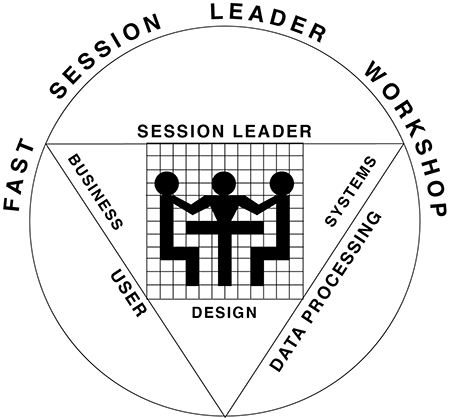February 1997

Facilitation in the 90's | Gary Rush Facilitation
The art of facilitation is now almost 50 years old. "JAD" type facilitation is almost 30 years old. A lot has changed since formal facilitation began in 1950. Changes have occurred in facilitation style, facilitator tools, use and acceptance of facilitators, and in facilitator training. I'll explore some of the changes, but first, I'd like to share a brief history of facilitation to set the perspective.
History
This is a brief history I've gathered over the past 14 years, since I first learned about facilitated workshops called "JAD". In 1950, two men - Alex Osborne and George Prince - decided that American corporations needed a boost in creativity. They formalized brainstorming (based on word association) and started a number of firms to provide brainstorming facilitators - Synectics is one of the companies. In 1976, Michael Doyle and David Strauss published "How to Make Meetings Work". Chuck Morris, a system engineer with IBM, adopted ideas from Doyle and Strauss to gather information enabling implementation of a software product called "COPICS". Tony Crawford of IBM Canada worked with Chuck to formalize the process called "JAD" - Joint Application Design. In the 80's many other techniques evolved - all along the same lines. FAST is one of those techniques.
Along a parallel path, other groups developed facilitation techniques - completely separate from JAD-like techniques. Groups such as the Institute of Cultural Affairs (ICA) developed the "ToP" - Technology of Participation - method.
In 1995, these two facilitation paths met.
Facilitation Styles
The reason I discussed the history is that two distinctive styles of facilitation evolved - Process and Non-Process. In both cases, the facilitator is neutral. The roles the other members play are similar. The non-process facilitator tends to get the group to develop ground rules and even their agenda. Their primary function is to manage the group dynamics through listening, conflict intervention, recording results, etc.. The process facilitator manages group dynamics, but also provides the workshop agenda and keeps participants to the agenda. They assist the group in reaching their deliverable - while remaining neutral. JAD-type facilitators are process facilitators.
It is important to know the two styles. They have impacted the growth of facilitation. In the business world, especially, the process facilitator has made a significant impact. This is because of the added value of providing a clear process - agenda. Well-structured, facilitated workshops have gained favor in the business world over the past 6 years because they deliver immediate, tangible results. I believe that the process style of facilitation will be the only style to survive in business.
Facilitator Tools
In addition to style changes, tools have evolved over the past 50 years. Beginning with flip charts, facilitators have always used visual aids to capture the ideas of participants. To flip charts, we added vinyl magnetics, then sticky notes, computers, and even "colorform" like material that sticks to vinyl sheets and is reusable. Most of these have helped to enhance communication and capture ideas. The best tools follow the Keep it Simple philosophy.
Use and Acceptance of Facilitators
Early use of facilitators was for Human Resource applications. Later, JAD facilitators moved into information-gathering for system design. Lately, facilitators are being used to develop corporate Strategic Plans, Re-engineer Businesses, develop Marketing Plans, and even simple problem-solving - all in addition to Human Resource and systems development applications.
This increased use is attributed to facilitators providing clear, structured processes and corporate culture changes - changing from hierarchical to flatter organizations. This corporate culture change shows no sign of slowing - therefore the growth of facilitation should continue at an astounding rate. Companies need facilitators to accomplish the changes they have charted. The facilitator of the 90's is replacing the manager of the 70's - they empower groups to achieve a task.
Facilitator Training
Given the changes in use, style, and tools, it should be no surprise that the original form of apprenticeship training must change. Facilitators need formal, intensive training covering group dynamics, basic facilitation skills, project management, and process or agenda development. Along with those topics, facilitators need practice - lots of it. Any worthwhile training provides the appropriate topics, practice, and follow-up reference materials. Facilitation in the 90's is a whole new skill-set. Short cutting training produces poor facilitators. Poor facilitation will prevent companies from taking advantage of the changes in our cultures - thus being out of step with current business environment. ![]()


